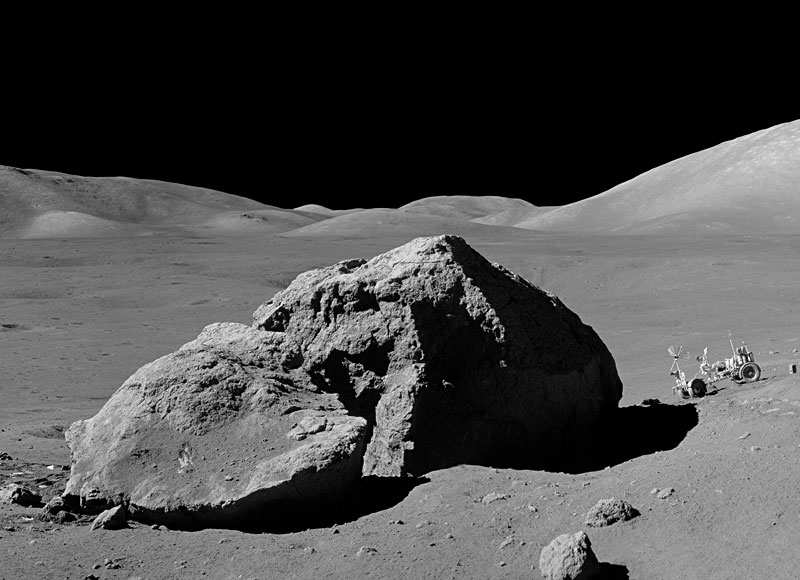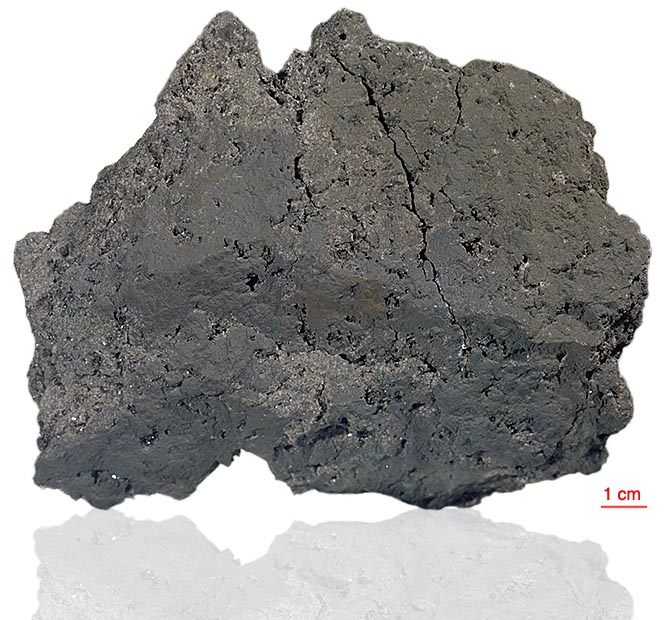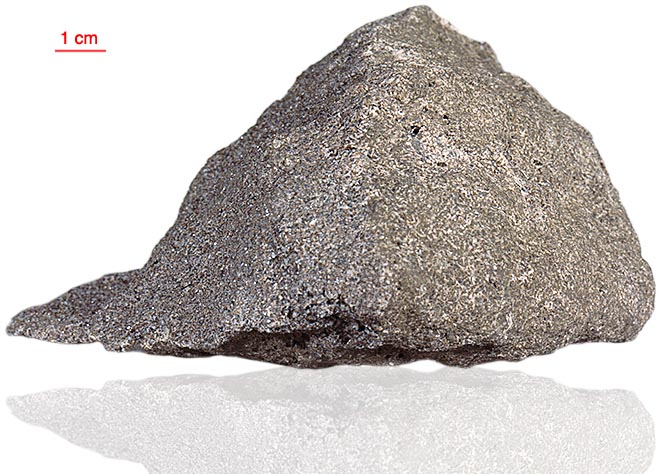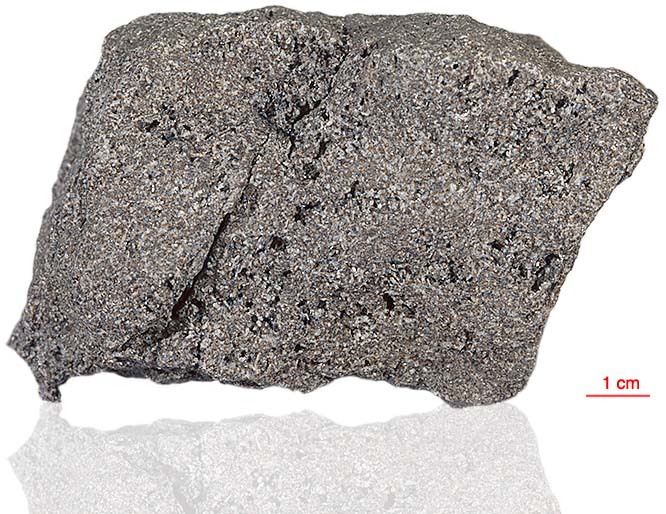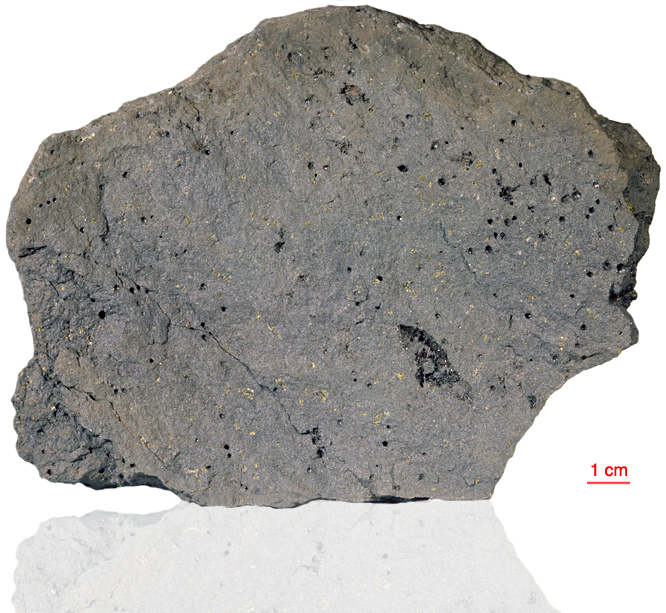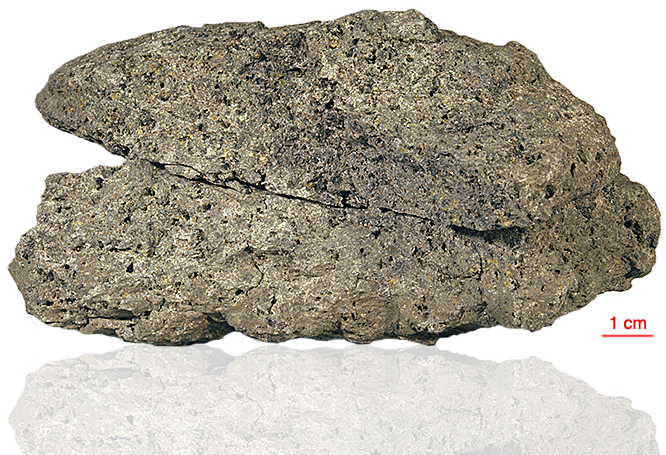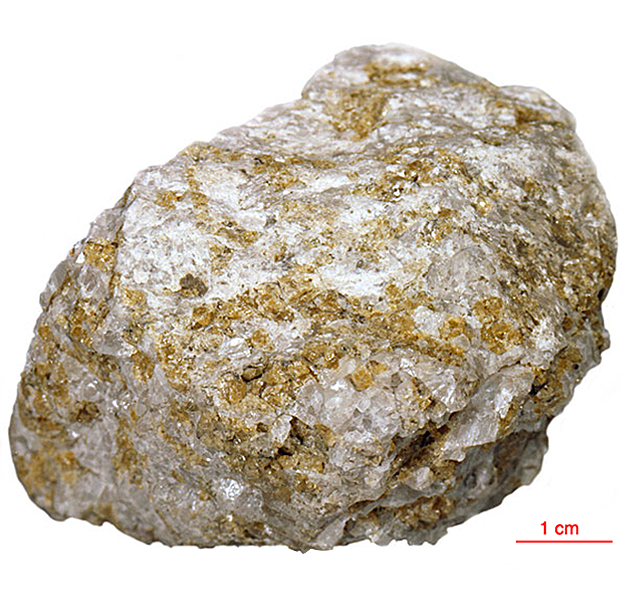
Fact sheet
Sample 76535 is of troctolite, a coarse-grained igneous rock that crystallised below the surface of the moon, but was excavated by later meteorite impacts. It exhibits evidence of shock after its original formation. This sample was collected as part of a rake sample at Station Six during the Apollo 17 mission. Near to where this sample was found was Tracy’s Rock – one of the largest boulders visited by the Apollo astronauts.
In thin section the rock has a granular, polygonal texture consisting of olivine and plagioclase feldspar crystals. Note: This thin section has been previously used for electron microprobe analysis and therefore shows residual traces of a carbon coating applied for this technique, considerable shattering (caused during sample preparation) and major fracturing where it has been broken and repaired.
Further details of this and other Apollo samples are here: http://curator.jsc.nasa.gov/lunar/
Apollo 17, the final manned landing mission, had two objectives: to obtain samples of ancient rocks from the lunar highlands and to look for evidence of younger volcanic activity on the valley floor.
This small Collection contains material deriving from both periods, including igneous rocks around 4.3 billion years old from the lunar highlands as well as younger volcanic samples dating from about 3.6 billion years ago.
Apollo 17 was launched on 7 December 1972.
